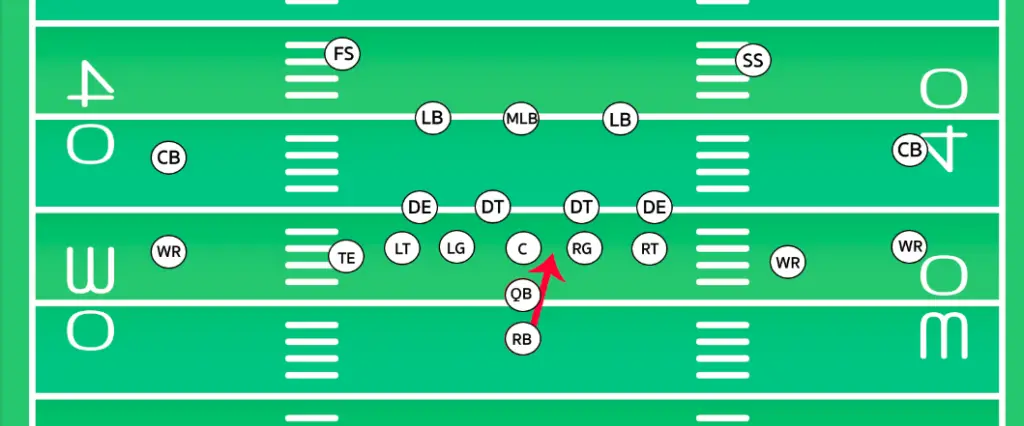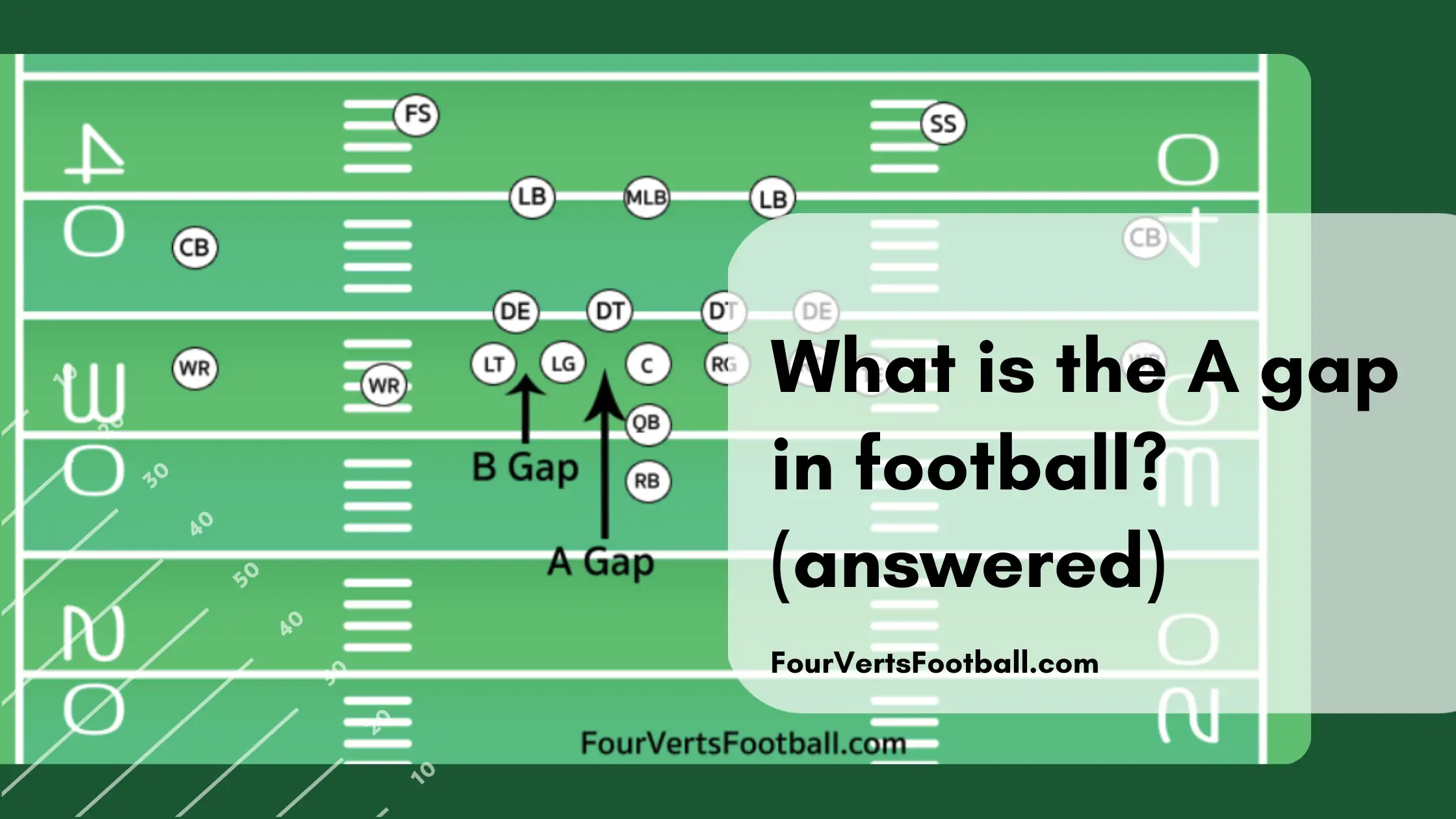Gaps in football refer to the spaces on the field between the offensive lineman. These spaces are referred to as gaps and are labelled using letters. The lettering of gaps works by moving alphabetically from the middle of the offensive line outwards.
The A gap in football refers to the area between the offensive guard and the center. There are two A gaps on the offensive line both of which are on either side of the center.
The A gap is used by both the offense and defense throughout the course of a game.
The offense will use the A gap as a lane to rush the football. The defense uses the A gap as a gap to rush the quarterback and to clog holes the ball carrier may attempt to run through.
The gaps in an offensive line are labelled alphabetically from the inside out. The two gaps between the guard and center are the A gaps. The space between the guard and tackle are the B gaps. And the space outside of the offensive tackle is the c gap.
Rushing the ball through the A gap
When rushing the ball the offense is always going to have already decided where the ball carrier is going to go with the football.
The offense will choose a gap either between or outside the offensive lineman.
By communicating where the ball carrier is going before the snap players are able to know which direction they should block their opponents.
If the ball is going in the A gap on a run then the offensive tackle are going to want to push the edge defenders towards the sideline. This way they will not be able to get to the A gap and make a play.

The biggest task in running through this gap is getting past the defensive tackles. Defensive tackles line up in the middle of the defensive line and are typically the largest and heaviest players on the defense.
To get through the a gap the center and guards need to find a way to move these large defenders. To do this effectively the guard and the center will often double-team a single defensive tackle in the a gap.
That all being said even if the defensive tackle is moved out of the way these runs don’t tend to go for many yards.
Runs through the A gap lead directly into the middle of the field. When a ball carrier gets through this gap they are often met by linebackers waiting to make a tackle.
For this reason, runs in the A gap are often used in short-yardage situations. Running through this gap in the middle of the offensive line is the shortest route from the backfield to the line of scrimmage.
This can allow the ball carrier to get some positive yards quickly even though they do not often go very far. When playing a third or fourth and inches the A gap is often used via a dive play or a quarterback sneak.
Pash rushing the a gap
The defense also makes use of the a gap in football when rushing the quarterback. When looking to bring the quarterback down in football the defensive players will be assigned gaps to rush.
Since the defensive tackles are in the middle of the formation the a gap is often their pass-rushing gap.
Similar to rushing plays defensive tackles will often be double-teamed when pass rushing as well.
This makes it incredibly hard to get to the quarterback when rushing through the A gap.
On some occasions, linebackers will blitz through the a gap as well. If they do this later in the play they may find themselves unblocked as the defensive tackle has the offensive lineman occupied.
Run defense
The defense is also going to assign gaps to players when playing run defense.
There are two types of ways in which one defense can be assigned their gaps. There is the one gap defense and the two gap defense.
The one gap defense has players assigned a single gap to cover on rushing plays. Once the play identifies a run he can then attack his gap and hopefully make a tackle.
The other style of defense is a two gap defense. This entails each defensive player on the line having two gaps in which they must fill. To do this effectively players must be a little more conservative in their play.
If a two gap player chooses the wrong gap and leaves one open the ball carrier may have an easier time getting through the line.
Instead, they must sit back and wait for the running back to make his cut before committing to a specific gap.
The a gap is usually covered by defensive tackles when the opponents rush. For many defensive tackles run stopping is how they earn their money.
Ideally, a defensive tackle wants to get into the a gap and plug it. This way the ball carrier will have to change his path if he was planning to run through the a gap.
If the ball carrier’s intended gap is plugged it will contain him in the backfield for an extra second or two. This is often enough time for the other defensive players to rally around him and bring him down for the tackle.

